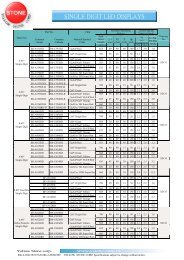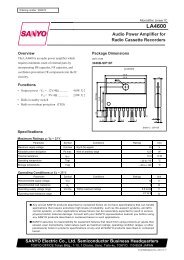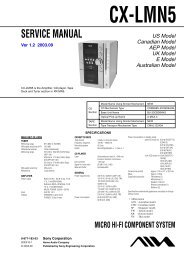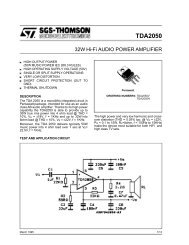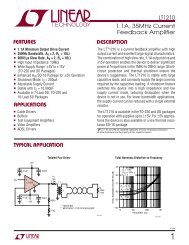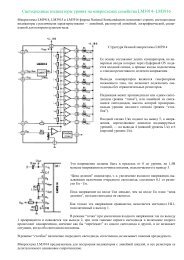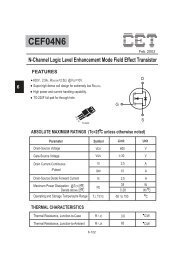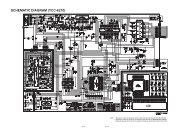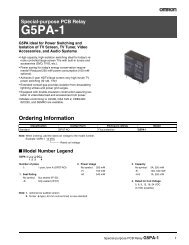TDA7386 - Tehnari.ru
TDA7386 - Tehnari.ru
TDA7386 - Tehnari.ru
You also want an ePaper? Increase the reach of your titles
YUMPU automatically turns print PDFs into web optimized ePapers that Google loves.
<strong>TDA7386</strong>Application hints3 Application hintsReferred to the circuit of Figure 3.3.1 SVRBesides its contribution to the ripple rejection, the SVR capacitor governs the turn ON/OFFtime sequence and, consequently, plays an essential role in the pop optimization duringON/OFF transients.To conveniently serve both needs, ITS MINIMUM RECOMMENDED VALUE IS 10μF.3.2 Input stageThe <strong>TDA7386</strong>’s inputs are ground-compatible and can stand very high input signals (±8Vpk)without any performances degradation.If the standard value for the input capacitors (0.1μF) is adopted, the low frequency cut-offwill amount to 16 Hz.3.3 Standby and mutingStandby and muting facilities are both CMOS-compatible. If unused, a straight connection toVs of their respective pins would be admissible.Conventional/low-power transistors can be employed to drive muting and stand-by pins inabsence of t<strong>ru</strong>e CMOS ports or microprocessors. R-C cells have always to be used in orderto smooth down the transitions for preventing any audible transient noises.Since a DC current of about 10 µA normally flows out of pin 22, the maximum allowablemuting-series resistance (R 2 ) is 70 KΩ, which is sufficiently high to permit a mutingcapacitor reasonably small (about 1µF).If R 2 is higher than recommended, the involved risk will be that the voltage at pin 22 may riseto above the 1.5 V threshold voltage and the device will consequently fail to turn OFF whenthe mute line is brought down.About the stand-by, the time constant to be assigned in order to obtain a virtually pop-freetransition has to be slower than 2.5V/ms.11/14



